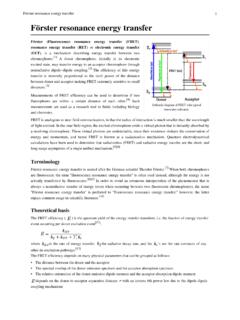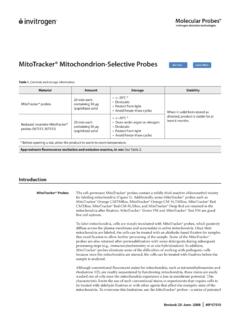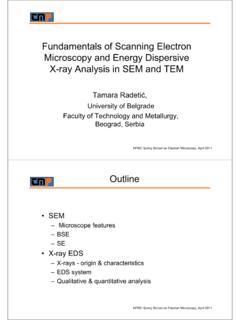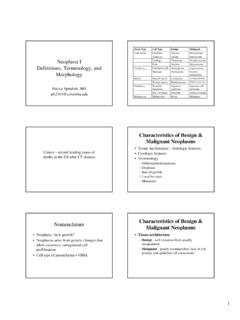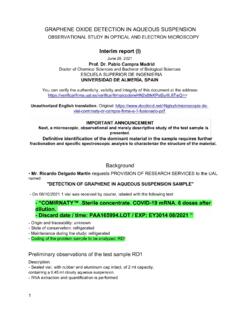Transcription of The Handbook - Laboratory Diagnosis of Tuberculosis by ...
1 Laboratory Diagnosis of Tuberculosis by Sputum microscopy The Handbook Global edition A publication of the Global Laboratory Initiative a Working Group of the StopTB Partnership global Laboratory initiative advancing TB Diagnosis Published by SA Pathology Frome Road Adelaide South Australia 5000. All rights reserved. No part of this book may be reproduced or transmitted in any form or by any means without the written permission of the publisher. The authors assert their moral rights in the work. ISBN: 978-1-74243-602-9. Production Project Editor Mark Fitz-Gerald Technical Editors Pawan Angra (CDC), Valentina Anisimova (KNCV), Christopher Gilpin (WHO), Richard Lumb (SA Pathology), Hiroko Matsumoto (JATA), Armand Van Deun (The Union). Manuscript Editors Mark Fitz-Gerald, Richard Lumb Illustrations Kerry Reid Design Sue Dyer Design Contact 2013 SA Pathology (formerly IMVS). Laboratory Diagnosis of Tuberculosis by Sputum microscopy Richard Lumb Armand Van Deun Ivan Bastian Mark Fitz-Gerald The Handbook Global edition Laboratory Diagnosis of Tuberculosis by Sputum microscopy Acknowledgements The writing team wish to thank the World Health Organization (WHO) and the International Union Against Tuberculosis and Lung Disease (The Union) for recognizing that smear microscopy remains an important tool for the Laboratory Diagnosis of Tuberculosis and in monitoring patients' response to treatment.
2 The Global Health Bureau, Office of Health, Infectious Disease and Nutrition (HIDN), US Agency for International Development, financially supports the development of The Handbook : Laboratory Diagnosis of Tuberculosis by sputum microscopy through TB. CARE I under the terms of Agreement No. AID-OAA-A-10-00020. This publication was made possible by the generous support of the American people through the United States Agency for International Development (USAID). The contents are the responsibility of TB CARE I and do not necessarily reflect the views of USAID or the United States Government. SA Pathology (formerly IMVS Pathology) is thanked for enabling the Tanzanian edition of The Handbook to be used as the template for the Global Laboratory Initiative (GLI) edition of The Handbook . GLI is a working group of the Stop TB Partnership. Thanks go also to illustrator Kerry Reid and Sue Dyer Design for their long-standing contributions to earlier editions of The Handbook , and their enthusiastic and very professional inputs.
3 As we remarked in the first edition of The Handbook , it remains our sincere hope that the intended users of The Handbook , the technicians at the forefront of the international effort to contain and overcome TB, will find it useful in their daily Laboratory work. The Handbook Global edition TB CARE. Contents Page Foreword 4. Introduction 6. Symbols and warnings 7. Personal safety 8. Sputum collection 10. Two specimens 10. Hospital patients 10. Safe collection 10. Pre-collection patient advice 11. How to collect a specimen 12. Specimen quality 12. Rejection criteria 12. Registration 13. Storage and transport 14. Smear preparation 18. What you need 18. Making a smear 19. microscopy Method Brightfield 22. A microscopy Method Fluorescence 50. B microscopy Appendices 68. Specimen containers 68. Documentation 69. Abbreviations 72. Biosafety 73. Quality assurance 79. References 83. Patient information 84. Laboratory Diagnosis of Tuberculosis by Sputum microscopy Page 3. Foreword In 2011, there were an estimated million new cases of Tuberculosis (13% coinfected with HIV).
4 Million people died from the disease, including almost one million deaths among HIV-negative individuals and 430,000 among people who were HIV- positive. million (67%) of these newly diagnosed cases were notified to national TB control programmes and reported to the World Health Organization. Among the million new cases with pulmonary TB, million (56%) had sputum smear-positive TB, and another million were smear-negative*. In many countries, sputum smear microscopy remains the primary tool for the Laboratory Diagnosis of Tuberculosis . It requires simple Laboratory facilities, and when performed correctly, has a role in rapidly identifying infectious cases. It has been shown conclusively that good-quality microscopy of two consecutive sputum specimens will identify the vast majority (95 98%) of smear-positive TB patients**. Moreover, microscopy can be decentralised to peripheral laboratories. Despite its advantages sputum smear microscopy does fall short in test sensitivity, especially for certain patient groups such as those living with HIV/AIDS, and also in the Laboratory Diagnosis of childhood and extrapulmonary disease.
5 New diagnostic tools endorsed by WHO (such as liquid culture, line probe assay, Xpert MTB/RIF) overcome many of the limitations of smear microscopy , especially for patients living with HIV/AIDS. and those with a high likelihood of having drug-resistant TB. WHO and The Union have previously published guidelines for sputum smear microscopy . In the decade since publication, many developments have occurred and a revised and updated text replacing both is timely. The Handbook is a practical guide for the Laboratory technician; it draws on the ideas outlined above and references best practice documents released by WHO and the GLI. The Handbook uses simple text and clear illustrations to assist Laboratory staff in understanding the important issues involved in conducting sputum smear microscopy for the Diagnosis of TB. * WHO Global Tuberculosis report 2012 WHO/HTM/ **WHO Same-day Diagnosis of Tuberculosis by microscopy 2011. WHO/HTM/ Laboratory Diagnosis of Tuberculosis by Sputum microscopy Page 5.
6 Introduction The purpose of The Handbook is to teach Laboratory technicians how to safely collect, process and examine sputum specimens for the Laboratory Diagnosis of Tuberculosis (TB). Sputum microscopy Sputum smear microscopy is one of the most efficient tools for identifying people with infectious TB. Smear-positive patients are up to ten times more likely to be infectious than are smear-negative patients. The purpose of sputum microscopy is to: Diagnose people with infectious TB. Monitor the progress of treatment Confirm that cure has been achieved Consistent and accurate Laboratory practice helps to save lives and improves public health. Risk of infection Where good Laboratory practices are used, risk of infection to Laboratory technicians is very low during smear preparation. A higher risk of infection exists when collecting sputum specimens from patients. Doctors and nurses working in TB wards and clinics where aerosols are generated have a much higher risk of becoming infected with TB.
7 Personal safety When performed correctly sputum examination will not place Laboratory technicians at increased risk of developing TB. Laboratory Diagnosis of Tuberculosis Page 6 Introduction by Sputum microscopy Symbols and warnings Failure to follow these instructions may harm your health or cause immediate damage to equipment Failure to follow these instructions may affect test results, or cause equipment damage over time P Correct the preferred way to do something 7 Do not do this Wear gloves for this procedure Wear a Laboratory coat for this procedure Wash your hands This substance is toxic This substance is corrosive This substance is infectious This substance is flammable Laboratory Diagnosis of Tuberculosis by Sputum microscopy Symbols and warnings Page 7. Personal safety Risks and transmission TB is an infectious disease. Transmission occurs when small aerosols containing acid- fast bacilli (AFB) become airborne and are inhaled. When a person coughs, sneezes, sings or vigorously exhales they produce aerosols that could be infectious if the person has pulmonary TB.
8 Tuberculosis (TB). Properly trained technicians, when working correctly, have a very low risk of infection in a TB Laboratory . However some activities such as talking to infected patients and collecting specimens can carry a greater risk. Assume all specimens are infectious. Do not shake or stir samples, aerosols may be generated Specimens may contain pathogens other than TB. When working in the Laboratory do not: Put anything in your mouth ( a pen, your fingers etc.). Eat, drink or smoke Pipette by mouth Lick labels and envelopes etc. Apply cosmetics or handle contact lenses Store food or drinks in the Laboratory Wear open-toed footwear or bare feet Use mobile telephones in the Laboratory Personal protective equipment (PPE). Laboratory staff must be supplied with PPE that is appropriate for the microscopy Laboratory . You must wear protective clothing at all times in the Laboratory You must wear gloves when handling specimens Do not take PPE out of the Laboratory Store PPE separately from personal clothing Laboratory Diagnosis of Tuberculosis Page 8 Personal safety by Sputum microscopy Personal safety Gloves Wear gloves for all procedures that may involve direct or accidental contact with sputum, blood, body fluids and other potentially infectious materials.
9 After use, remove gloves and discard into the biohazard waste bin Wash your hands: Immediately if contaminated by a sample When you finish work Before leaving the Laboratory Coats A good Laboratory coat protects your skin and clothing. It has long sleeves and fastens in the front. The Laboratory is responsible for supplying and cleaning Laboratory coats. Masks 7. Surgical masks are not designed to protect the wearer, they are designed to stop the wearer spreading aerosols. Respirators are not required for performing sputum smear microscopy . Aerosols Good work practice minimises aerosol formation and contamination of work surfaces and equipment. Separate clean' activities (administration, microscopy ) from dirty' activities (specimen reception, smear preparation, staining). Never shake a sputum specimen Carefully open specimen containers, the sample may have collected around the thread of the container Spread the sample onto the slide gently in a regular motion Always air dry smears before heat fixing Use disposable wooden applicator sticks or transfer loops for making smears Always manage Laboratory waste correctly Ventilation Open doors and windows help reduce the risk of infection (see page 73 Biosafety).
10 Laboratory Diagnosis of Tuberculosis by Sputum microscopy Personal safety Page 9. Sputum collection Two specimens Where External Quality Assessment (EQA) is well established, and staff are limited, two sputum specimens are recommended for the Laboratory Diagnosis of TB. Specimen 1. Collect the first specimen when the patient presents to the clinic Give the patient a labelled sputum container for the next morning's sputum collection Specimen 2. Patient collects early morning sputum and takes it to the clinic Alternatively, microscopy of two consecutive sputum specimens, collected on the same day, may be performed. Hospital patients If the patient is in hospital, it is better to collect a sputum specimen each morning on two consecutive days. Safe collection Transmission of TB occurs because infectious droplets are released into the air when an infected patient coughs. Collect specimens outside so that infectious droplets are diluted in an open, well-ventilated area P To reduce the possibility of Laboratory staff becoming infected: Tell the patient to cover their mouth when coughing Collect sputum outside the Laboratory , preferably outside the building and well away from other people 7 Do not collect sputum specimens in closed spaces like: Laboratories or wards Toilet cubicles Waiting rooms Reception rooms Any poorly ventilated area Laboratory Diagnosis of Tuberculosis Page 10 Sputum collection by Sputum microscopy Sputum collection Pre-collection and patient advice Request for examination of biological specimen for TB.











